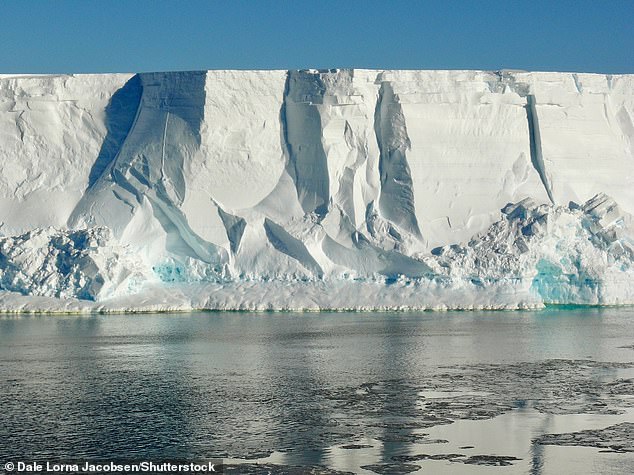Antarctica’s largest ice shelf is moving and could trigger icequakes, a new study warns.
Researchers found that the Ross Ice Shelf, an ice platform covering nearly 200,000 square miles, an area the size of France, suddenly jumps twice a day.
The sudden “slip” is caused by two parts of ice moving against each other, somewhat like the plate tectonic movements that cause earthquakes.
A new study finds for the first time that this phenomenon may cause ice shelves to fracture, making them more susceptible to collapse.
It could also trigger “icequake” seismic events, posing a danger to nearby animals or explorers.
Ice shelves are permanently floating sheets of ice connected to land.Pictured is the Ross Ice Shelf, the largest ice shelf in Antarctica.
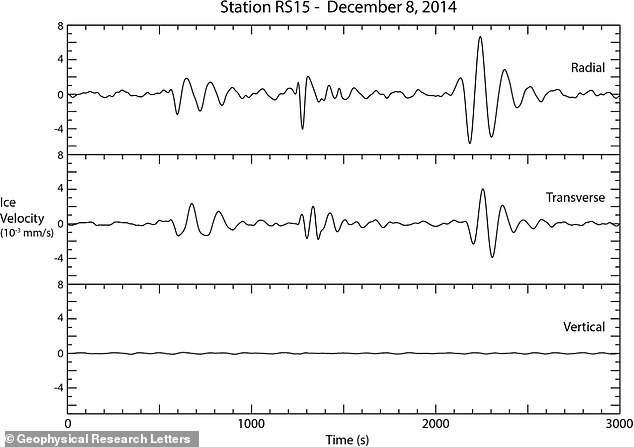
The researchers studied data from “seismometers” – small devices that record ground noise and movement, stationed around Antarctica.This image shows a record of earthquakes caused by ice in Antarctica in December 2014
The study was led by geophysicist Professor Doug Wiens of Washington University in St. Louis, Missouri, and was published in Geophysical Research Letters.
“We found that the entire shelf suddenly moved about 6 to 8 centimeters (or 3 inches) once or twice a day,” he said.
“These sudden movements can trigger icequakes and ice shelf fractures.”
Ice shelves are large floating ice platforms connected to landmasses such as Antarctica, although ice shelves are also found in other polar regions such as Greenland.
These ice shelves act as a protective buffer for continental ice, preventing the entire Antarctic ice sheet from flowing into the ocean, which would otherwise drastically raise global sea levels.
Therefore, breakup or any form of weakening of the ice shelf could lead to its disintegration in the coming decades, with serious consequences for coastal cities.
There are approximately 300 ice shelves scattered around Antarctica, which together cover three-quarters of the Antarctic coastline.
Professor Wiens and his colleagues focused on the Ross Ice Shelf, which is about the size of France and is the largest ice shelf in Antarctica.
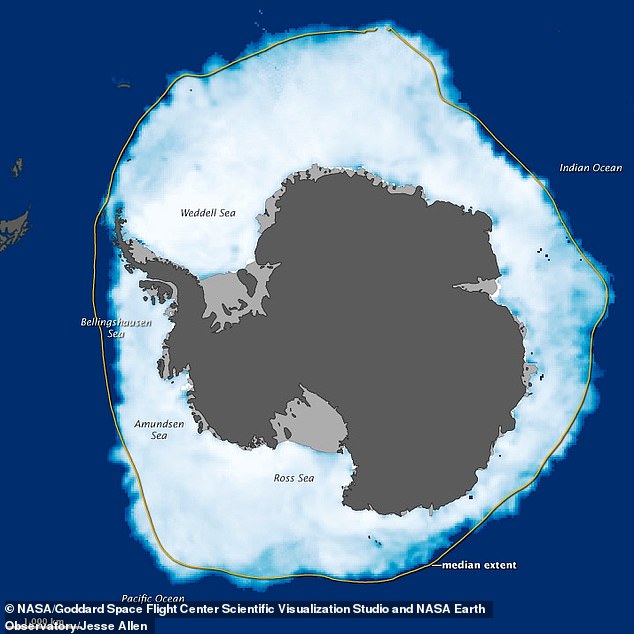
Image of Antarctica distinguishes between land (dark grey), ice shelves (light grey) and sea ice (white).The Ross Ice Shelf is the largest ice shelf in Antarctica, located in the south
They studied data from “seismographs” deployed across the continent in 2014, devices that record ground noise and movement.
Scientists say a fast-moving river or “conveyor belt” of ice, called the Willans Ice Stream, is pouring into the Ross Ice Shelf.
The movement of the Ross Ice Shelf is triggered by sudden movements of the Willans Ice Stream, called “slip events,” similar to the plate tectonic movements that cause earthquakes.
The researchers found that a large portion of the Willans Ice Stream, 60 miles by 60 miles long, remained stationary, while the rest of the ice stream wriggled forward, known as the “sticky spot.”
Then, once or twice a day, much of the ice tilts forward onto the Ross Ice Shelf.
It can move up to 16 inches (40 centimeters) in a matter of minutes, but if someone is there, they won’t know it’s happening.
“People cannot detect movement just by feeling it,” Professor Wiens said.
“This movement lasts for several minutes and is therefore undetectable without instrumentation.”
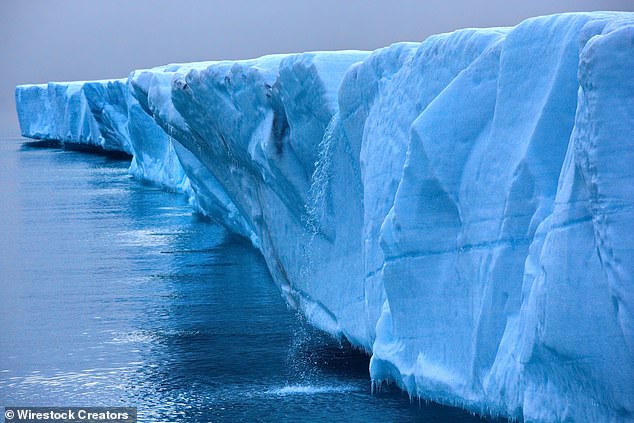
The Ross Ice Shelf (pictured) is a floating lip of ice that extends into the ocean.Scientists are interested in the interaction between ice shelves and ice flows, in part because they are concerned about the stability of Antarctica’s ice shelves in a warming world
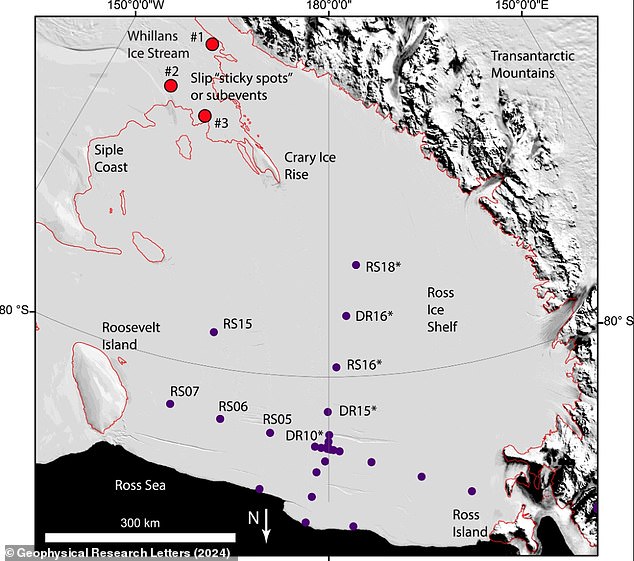
This image of the Ross Ice Shelf region highlights seismic stations shown in blue circles.The location of the Whillans Ice Stream slip point is shown in the red circle
However, researchers do not believe this slip and other similar incidents are directly related to human-caused global warming.
One theory is that they are caused by water loss from the Willans Ice Stream bed, making it more “sticky.”
However, the interaction between ice shelves and ice flows could still reveal more about the stability of Antarctica’s ice shelves in a warming world.
Professor Wiens said: “At the moment, icequakes and ice calving are just part of the normal lifespan of an ice shelf.”
“People are worried that the Ross Ice Shelf will one day break up because other smaller, thinner ice shelves have also broken up.”
#Antarctic #ice #shelf #size #France #suddenly #jumping #day #scientists #warn #trigger #devastating #ice #quakes
Image Source : www.dailymail.co.uk
